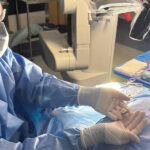Published Dec 13, 2023
The MED-EL Spotlight: Implementing Anatomy-Based Fitting into Your Clinical Workflow
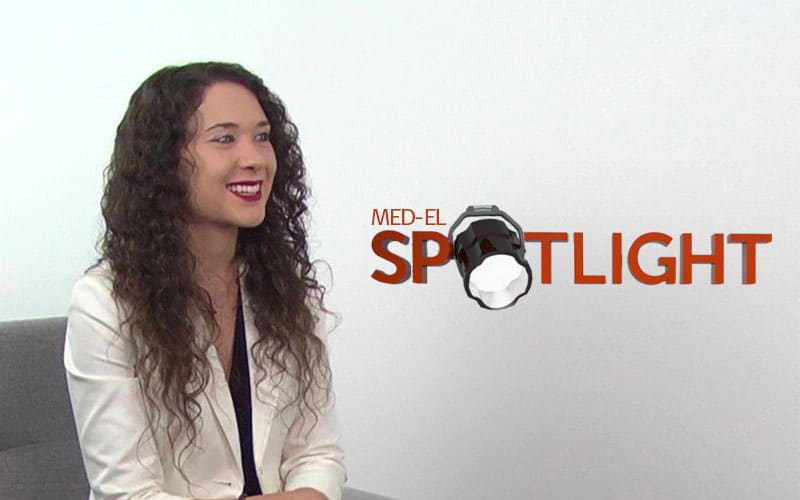
We sat down with Dr. Anna Louthan of Eastern Virginia Medical School to discuss how she implemented Anatomy-Based Fitting into her clinical workflow.
Anatomy-Based Fitting is a unique MED-EL approach to cochlear implant frequency mapping that uses data from OTOPLAN, an advanced image-based surgical planning tool.
Anatomy-Based Fitting allows clinicians to:
- Visualize the exact position of each electrode in the ear.
- Quickly adjust audio processor frequency settings to match electrode position.
- Optimize mapping to reflect individual differences in anatomy and electrode position.
This approach is the next step forward in helping MED-EL cochlear implant recipients achieve the closest to natural hearing.
In Dr. Louthan’s interview, we look at OTOPLAN implementation, an Anatomy-Based Fitting case study, and the new postoperative workflows that she uses. Read the interview highlights below.
Katelyn Glassman (KG): Is your clinic currently using OTOPLAN for preoperative array selection and for Anatomy-Based Fitting?
Dr. Anna Louthan (AL): Yes. We’re doing it preoperatively to pick out the device, postoperatively for Anatomy-Based Fitting, and we’re also doing post-activation Anatomy-Based Fitting. So, [during activation] for new patients and post-activation for patients who would benefit from Anatomy-Based Fitting for a variety of reasons.
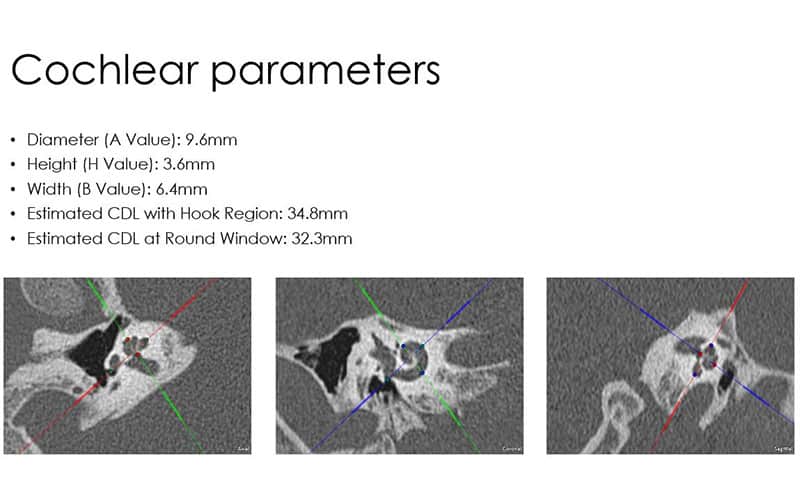
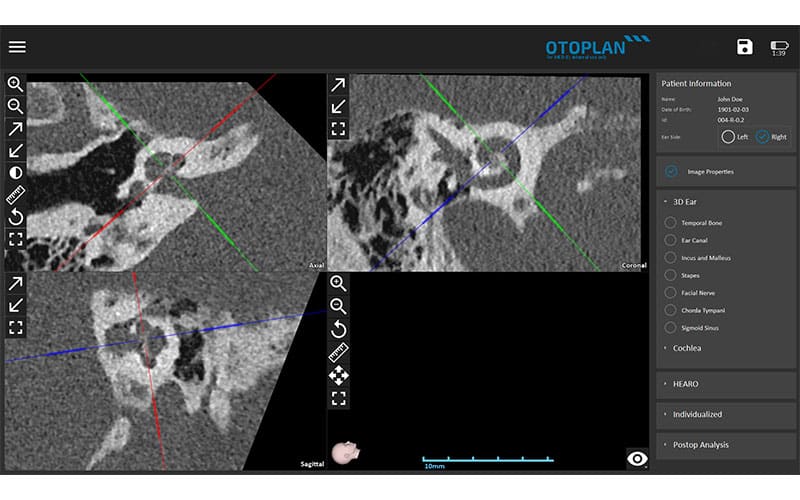
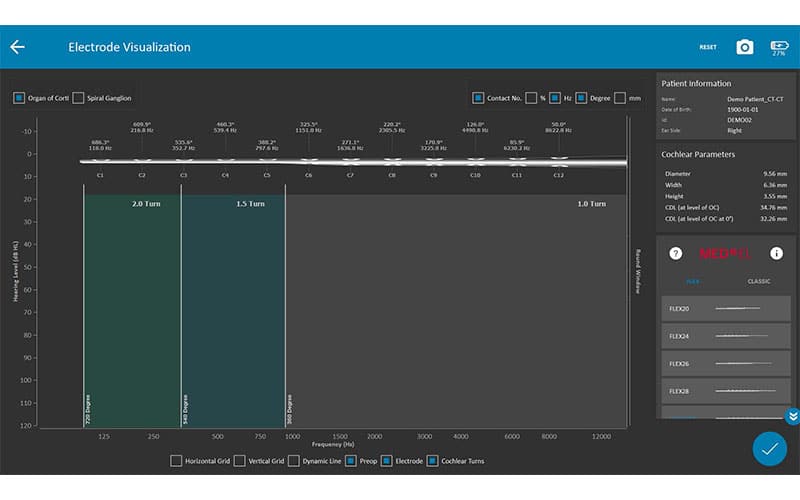
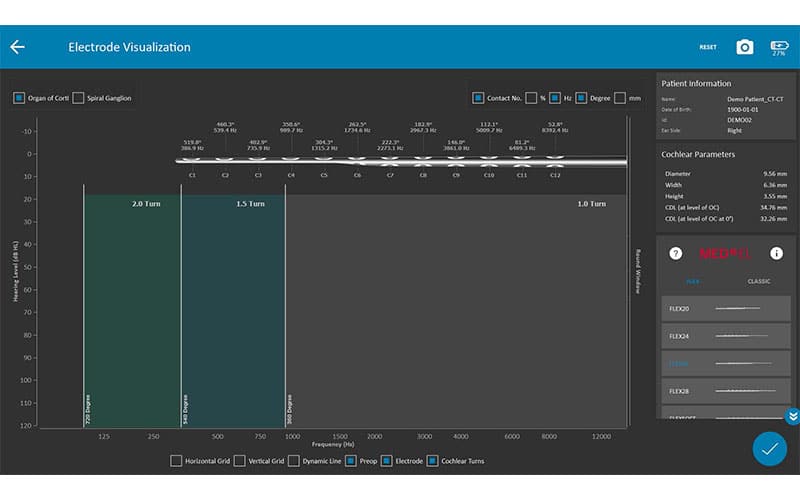
KG: So, tell me a bit about that, because I know that traditionally getting CT scans after activation is not the standard of care. Can you tell me how you talk about that process with patients and get them interested in doing the scans?
AL: So, for new patients, it’s kind of easy, to be honest. It’s just another checkbox on the long list of things they’ve got to do. And really, a big reason why patients choose MED-EL is because of the option of Anatomy-Based Fitting. When they know the post-op CT scan is going to give them that Anatomy-Based Fitting, they’re very happy to do it.
When it comes to our post-activation patients who are looking to do Anatomy-Based Fitting, most of the time they are doing it for a reason. That reason is, hopefully, to get them to hear better. They could also be having an issue, or they’re a musician who’s trying to get whatever they can out of their implant. So, they’re happy to do the post-op CT scan, because the benefits outweigh the costs.
KG: You just talked about your post-activation patients that have experience, but what about your new patients? Are you finding that you’re applying Anatomy-Based Fitting in all your patients or are there certain patient populations that you’re focused on using it with?
AL: So far, we’re doing it with all new users.

Anatomy-Based Fitting Example: FLEX28 array for patient with average-sized CDL (right ear)
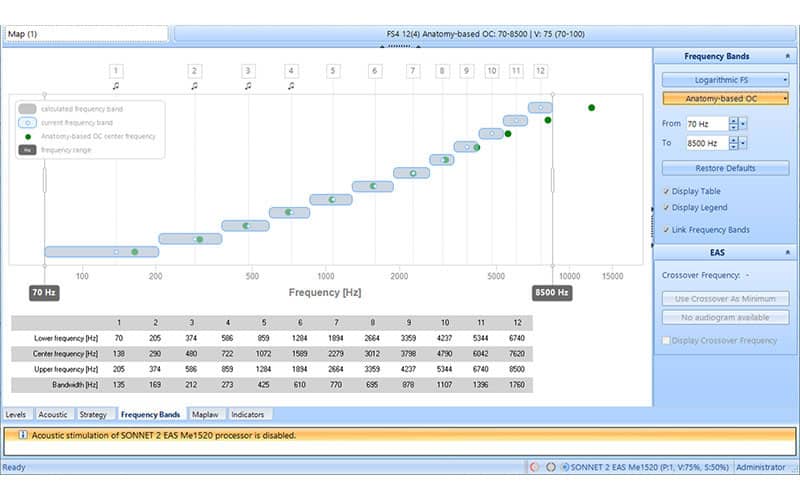
Anatomy-Based Fitting Example: FLEXSoft array for patient with moderately large CDL (left ear)
KG: Can you tell me about some of those positive experiences [with Anatomy-Based Fitting maps] and some of those cases where [patients] weren’t accepting of it?
AL: Yes, so most of my patients are accepting the Anatomy-Based Fitting map. All of my patients who are new users are going home with Anatomy-Based Fitting maps now. By post-op activation, the majority of them are accepting that Anatomy-Based Fitting map.
Most of the time, they’re either saying that it sounds about the same or they’re immediately saying it sounds a little bit better. It’s obviously harder to tell at the two-week point because I’m also remeasuring . Additionally, having a boost in volume can improve sound quality on its own, but most of the patients have actually been happy with it.
[…] What’s really exciting is the people who are having a problem, and thus, we decide to do the Anatomy-Based Fitting mapping to help with that problem. In one particular case, I have this musician [with single-sided deafness] who is fantastic. She is a cellist; she’s a musician by trade. So, she listens to music for a living.
When I met her, we decided to use the FS4-P mapping strategy, even though she’s been using her cochlear implant for two years. With it, she immediately said that she was hearing violins in her cochlear implant for the first time since losing her hearing.
KG: How do you feel like having this new tool with Anatomy-Based Fitting is changing your clinical practice?
AL: With MED-EL, I have always enjoyed that there is always a new programming method coming out to improve my patient’s experience. For many of my patients who have quality issues, FS4-P is my first step. For my bimodal patients, I love the front-end delay match. That’s another [method] I use to try to improve sound quality for my patients.
With Anatomy-Based Fitting, it’s another step to the right direction. It’s another tool to use for these patients, even for patients where performance in the booth looks amazing, but subjectively sound quality isn’t what they want.
I don’t know if we will ever get to the point of providing them with that normal, natural hearing they had before that they lost their hearing, but I love that we are always reaching for that.
During the time of filming, Dr. Louthan’s patient had received the Anatomy-Based Fitting map recently. We followed up a few weeks after to see how her musician patient progressed.
KG: When we previously spoke, you had a patient who is a musician that you had recently fit with Anatomy-Based Fitting. Have you been able to see the patient again since that fitting?
AL: Yes, I have seen the patient back. She is doing well, but we’ll continue to make further adjustments to optimize her programming. She likes the new Anatomy-Based Fitting mapping better than her previous maps at default frequency settings and finds the sound quality to be more natural in her regular every day “live” environments (i.e., using her cochlear implant and normal hearing contralateral ear).
Katelyn Glassman, AuD, CCC-A, is MED-EL’s senior manager of site-initiated research, where she collaborates with North American investigators to support research on approved MED-EL products and objective measures. Katelyn earned her audiology degree from the University of North Carolina at Chapel Hill and completed a NIH-funded traineeship at Boys Town National Research Hospital. She has over a decade of experience working in cochlear implant research and was a research audiologist in the Laboratory for Translational Auditory Research at New York University prior to joining MED-EL in 2014.
Anna Louthan, AuD, CCC-A, is an audiologist at Eastern Virginia Medical School. She earned her audiology degree from James Madison University and currently specializes in adult cochlear implant fitting and diagnostics. Outside of work, Dr. Louthan educates cochlear implant recipients and cochlear implant candidates through posts about cochlear implant utilization, communication tips, and fun hearing facts through her Instagram @audiologistanna.
Want to hear more?
Watch the whole conversation between audiologist Anna Louthan and MED-EL’s senior manager of site-initiated research
Watch NowReferences
Was this article helpful?
Thanks for your feedback.
Sign up for newsletter below for more.
Thanks for your feedback.
Please leave your message below.
Thanks for your message. We will reply as soon as possible.
Send Us a Message
Field is required
John Doe
Field is required
name@mail.com
Field is required
What do you think?
© MED-EL Medical Electronics. All rights reserved. The content on this website is for general informational purposes only and should not be taken as medical advice. Contact your doctor or hearing specialist to learn what type of hearing solution suits your specific needs. Not all products, features, or indications are approved in all countries.



